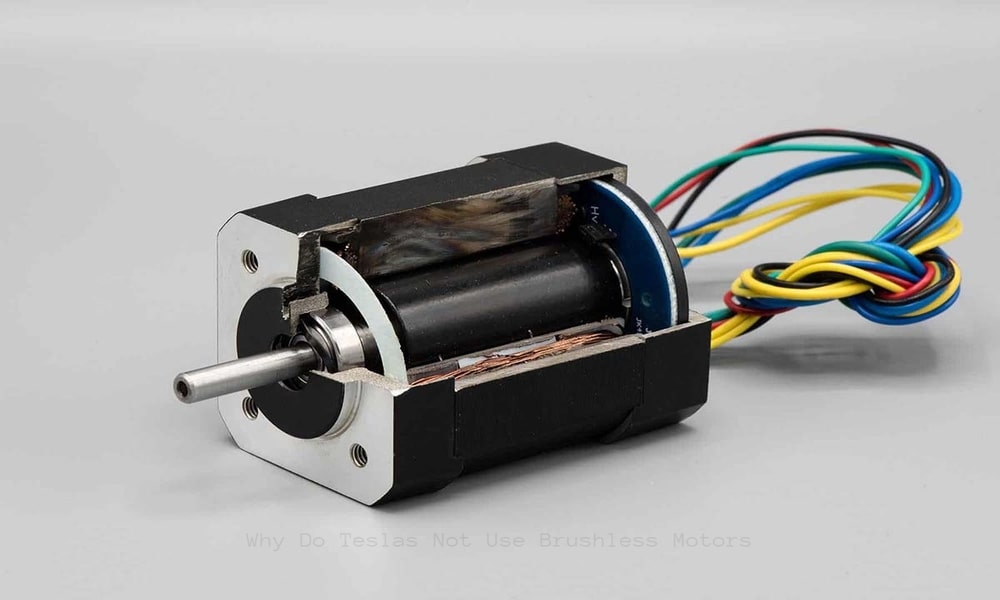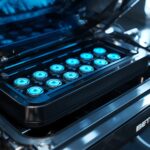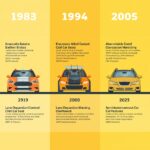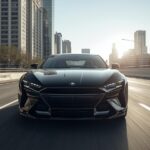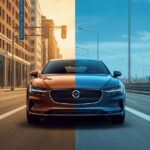Tesla Brushless Motors operate without the traditional mechanical brushes. An electronic controller is used to control the current flow through motor windings and create a rotating magnetic fields. This motor design solves issues such as heat, friction, and wear due to mechanical brushes.
Brushless motors key components
- The Rotor: which is typically equipped with permanent Magnets. The stator interacts with its magnetic fields to drive the rotor.
- Stator: the stationary part (with windings) of the motor. It produces an electromagnetic field upon energizing.
- Controller Electronic (Controller electronic ): It is responsible for controlling the flow of electricity to the stator wounding’s. This ensures a precise, efficient and accurate rotation.
How Brushless motors work?
The stator is responsible for creating a field of magnetic force that revolves around the motor, causing it to move. In brushless electric motors the commutation is controlled electronically. It allows more precision in controlling speed, torque and positioning. This reduces both energy waste and noise when operating, making brushless engines ideal for many modern applications.
Why are Brushless motor popular?
Popular reasons of Brushless motors
A number of industries are using brushless engines because they have many advantages:
- Efficiency: Brushless motors offer a greater energy conversion efficiency compared to brushed motors. These motors reduce energy loss by removing friction created by brushes.
- Durability: By eliminating the brushes from motors, you can extend their lifespan.
- Minimal Maintenance: These motors don’t require any brushes and are therefore less likely to cause downtime or maintenance costs.
Applications of Brushless motors
Brushless motors find widespread use in:
- Drones: have a lightweight, efficient design that makes them the perfect choice for aerial applications.
- Consumer Electronics: Fans, laptops, or hard disk drives all rely upon brushless motors.
- Industrial Automation: Brushless motors offer precision machines a more controlled, smoother motion.
Reasons why do Teslas not use brushless motors?
Tesla focuses on performance
Tesla vehicles are designed with high performance in mind, which includes enhanced acceleration, long-range capability, and excellent efficiency. Tesla cars require a high level of torque, which brushless motors cannot achieve.
Brushless Motors in EVs: What are the Limitations?
They face significant challenges in scaling up when they are used on large and powerful automobiles like Teslas. Because of the higher power needs typical of electric cars, they aren’t as efficient or stable in terms thermally.
Thermal considerations
Even when driving at high speed or using electric vehicles for a long time, they can produce considerable heat. Tesla motors are suitable to EVs more than brushless motors. This is another reason why do Teslas not use brushless motors? , as Tesla’s motors are more adept at managing heat during prolonged high-power usage.
Tesla’s motor technology
AC induction motors
Tesla Model S models were the first to feature AC induction Motors. These motors function by applying a minute amount of current through the rotor. A magnetic field is created that interacts the the static field and creates movement.
Tesla vehicles
- Performance High-Speed: Ideal for high-speed sustained acceleration.
- robust and reliable: is a proven technology that handles heavy loads.
Permanent magnet synchronous motors
Tesla switched to PMSMs with its Model 3 and Model Y. This motor uses stable magnets for the rotor. It improves efficiency and reduces energy loss.
Why Tesla uses PMSMs to specific models?
As PMSMs have greater efficiency, they can also be fitted to vehicles with a longer range.
Advantages of Tesla’s motor choice
- High Efficiency: Tesla’s electric motors can convert a much higher proportion of electricity into mechanical force, which extends the driving distance.
- Achieve Better Performance Under High Loads: Tesla’s Motor Technologies excel in stressful situations, ensuring consistent performances even for heavy and large vehicles like the Model X.
- Scalability: Tesla’s Motors is able to be customized for different vehicle models, ranging from compact sedans like the Tesla Semi up to heavy-duty vehicles.
Why do Teslas not use brushless motors? Because Tesla’s AC induction and PMSM designs offer more suitable balance between performance, efficiency, and thermal management.
Disadvantages of Tesla’s motor choice
- Cost Incidences: Tesla Motors’ advanced materials are required to be precise and this can result in higher manufacturing costs.
- Complex Manufacturing Process: Tesla’s motor designs require meticulous engineering. They also use specialized manufacturing methods, which complicate production.
Efficiency and performance implications
Tesla’s decisions to implement advanced motor technologies have a direct effect on vehicle performance. Tesla, by focusing its efforts on motors that are high in efficiency, ensures longer distances between fill-ups, less fuel consumption, better acceleration and industry benchmarks.
Comparison with other electric vehicle manufacturers
Rivian
Rivian utilizes in wheel motors to provide independent control of each tire. Although this is superior for off road performance, the system is more complex compared with Tesla’s motor centralized system.
Lucid motors
Lucid Motors focuses primarily with their motors designed for luxury EVs to achieve exceptional range.
Traditional automakers
Ford and GM adopted simple motor technologies in order to balance performance and cost while transitioning from EV production.
Final thoughts
Tesla has made a strategic move to steer clear of brushless engines. This decision was driven by considerations for performance, efficiency and scalability. Tesla’s AC motors and PMSM technology are better suited for electric vehicle applications. Although brushless is suitable for smaller application, Tesla maintains its innovation and performance leadership with their advanced AC induction technologies.

